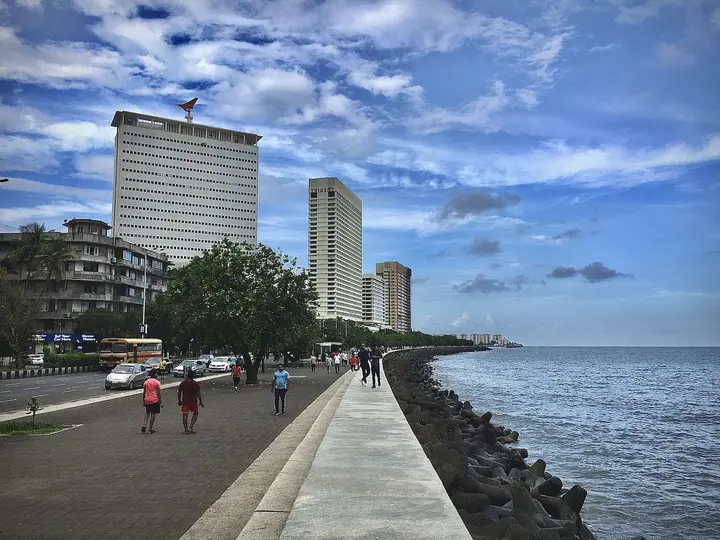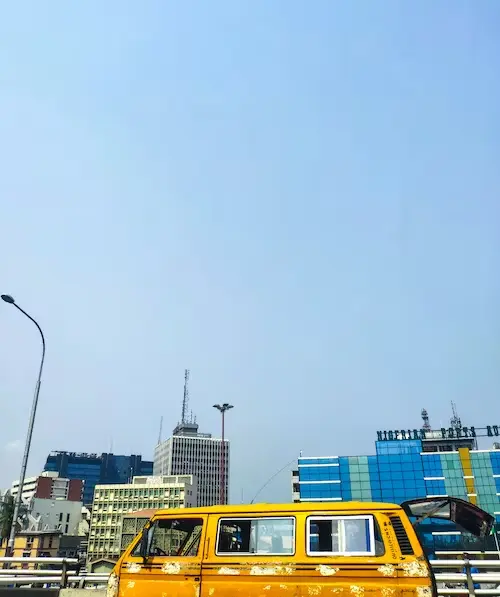Census of the most populous cities in the world

Overpopulation is a growing phenomenon in the modern world, where the planet's population is constantly increasing. In light of this rapid population growth, we find that some cities are witnessing unprecedented overcrowding, which poses a major challenge at various levels. The most densely populated cities are under immense pressure on infrastructure, public services, and natural and social resources. In this article, we'll look at some of the world's most populous cities and the impact this has on their residents.
Show key points
- Overpopulation in modern cities exerts immense pressure on infrastructure, public services, and natural resources, making urban planning a critical challenge.
- Cities like Tokyo, despite being the most populous, have managed to balance tradition and innovation to address overcrowding through technology and smart urban solutions.
- Mumbai faces serious issues such as severe traffic congestion, environmental degradation, and vast economic disparities due to its rapid population growth.
- ADVERTISEMENT
- Lagos, Africa’s most populated city, struggles with inadequate housing and public services, yet holds significant economic potential due to its young workforce.
- Cairo’s overpopulation adversely impacts public transportation, housing, and environmental conditions, ultimately degrading the quality of life for its residents.
- Governments and societies need to implement sustainable strategies and invest in smart infrastructure to manage the consequences of rapid urban population growth.
- While overpopulation presents considerable difficulties, it can also foster economic and cultural development if effectively managed through collaboration and innovation.
1. Challenges associated with overpopulation in cities

Concerns are now growing about overpopulation in cities around the world and the negative repercussions for residents of these massive cities. Overpopulation is a major challenge facing governments and societies around the world, causing problems including the environment, infrastructure, public services, health and overall quality of life.
Recommend
One of the biggest challenges overpopulated cities face is infrastructure pressure. As the population grows, it becomes necessary to provide civic facilities and services to keep pace with this growth, including roads, schools, hospitals, commercial areas and public transport. However, city resources are often limited, causing delays in the provision of these facilities and services and impeding the absorption of such a growing population.
Moreover, overpopulation is exposed to serious environmental problems. Once the urban population increases, the demand for natural resources such as water, food, and energy increases. This means increased resource exploitation, environmental pollution and greenhouse gas emissions, leading to negative impacts on the environment and the health of the population.
In addition, residents in the most crowded cities face challenges in terms of health and quality of life. With people clustered in a small space, it becomes difficult to provide adequate health care and maintain an adequate level of hygiene and sanitation. Thus, the risk of spreading diseases and epidemics and deteriorating the overall quality of life increases.
Overpopulation in cities is a fundamental challenge that governments and societies must address. Work must be done to strengthen infrastructure and improve the delivery of public services, in addition to focusing on environmental sustainability and the health of the population. Developing smart cities and managing population growth in sustainable ways is key to creating healthy and sustainable urban environments that meet the needs of residents and ensure their long-term well-being.
2. Tokyo: Capital of billions of inhabitants

Tokyo in Japan is one of the world's most densely populated cities. Tokyo is home to more than 37 million people, making it home to the largest population in the world. Tokyo is a role model in bringing together cultures and diversity, a city that combines ancient history with contemporary civilization.
With Tokyo's population steadily growing, the city faces significant challenges. The Japanese government should control this large overcrowding by providing adequate housing and improving infrastructure to ensure the comfort and safety of citizens. With different nationalities and cultures in Tokyo, it also requires the organization of a sustainable and balanced lifestyle characterized by tolerance and mutual respect.
However, it is undeniable that Tokyo has many of the economic and cultural benefits provided by overpopulation. With a large population, businesses and institutions, Tokyo is experiencing tremendous economic growth and vast job opportunities. Global business and trade cities and diverse culture reinforce Tokyo's position as one of the most important cities in the world.
Despite the great challenges that Tokyo faces due to overpopulation, it is proving day by day that it can adapt and develop. It relies on technology and innovation to improve the daily lives of its citizens, such as using artificial intelligence and data analysis to better manage resources and achieve environmental sustainability.
Tokyo remains an inspiring city that combines tradition and modernity, where millions of people can live and work next to this vibrant urban giant. How to deal with the challenges of overpopulation in Tokyo will be a valuable lesson for other cities around the world facing the same challenges.
3. Mumbai: The Challenges of the Indian Giant

Mumbai, also known as Maca, is one of India's leading and most populous cities. With a population exceeding two million, Mumbai faces enormous challenges in the face of its rapid population growth.
Spread on the shores of the Arabian Sea, Mumbai is a leading commercial and financial hub in India. The city's GDP is inflatably surpassing many other countries. However, economic and social fluctuations present important challenges facing Mumbai.
One of Mumbai's main challenges comes from inadequate infrastructure. The city suffers from a crippling traffic crisis and a clear lack of public transportation. The city handles an enormous number of commuters daily, and this makes commuting from one place to another a difficult and stressful task.
In addition, Mumbai faces severe environmental challenges. The city suffers from air pollution, water pollution and environmental degradation, which cause negative effects on the health and quality of life of its residents. The Indian government and local authorities should pay serious attention to these issues and work towards sustainable solutions to protect the environment and improve living conditions.
Moreover, Mumbai's population experiences significant income and poverty disparities. A large segment of the population lives in difficult conditions and extreme poverty, lacking basic services, education and health care. This segment of the population needs thoughtful government support to improve their living conditions and provide suitable employment and education opportunities.
As one of the largest urban centres in the world, Mumbai faces significant challenges in dealing with overcrowding and meeting their growing needs. The Indian government should develop comprehensive plans to develop infrastructure, improve public services and provide employment opportunities for the population. More broadly, Mumbai must work with other cities in India and globally to share experiences and innovative solutions to address the challenges of overcrowding in sustainable and efficient ways.
4. Lagos: Balancing High Growth and Development Challenges

Lagos, the capital of Nigeria and Africa's most populous city, is one of the busiest cities in the world. While the city is witnessing impressive economic prosperity and rapid population growth, it faces enormous development challenges.
Lagos' high growth is due to many factors, including massive population growth and migration from rural areas and other cities. The city's population is estimated at millions of people, putting enormous pressure on infrastructure and public services.
Lagos suffers from a lack of adequate housing, with many of its residents living in informal neighbourhoods and camps for the displaced. This affects the quality of life and exacerbates the vulnerability of infrastructure, including lack of clean water supply and adequate sanitation.
In addition, Lagos faces challenges in transportation and traffic congestion. The urban desert, crowded with cars and motorcycles, is the primary means of transportation for many of the city's residents, leading to congestion of its streets and delays in commuting.
However, Lagos also has enormous potential for development and prosperity. The city is a hub for business and commerce, with a young and dynamic workforce. As local government moves towards infrastructure development and investment, there is an opportunity to balance high growth with development challenges.
The government must work to provide adequate housing and improve infrastructure, including improving public services and providing clean water and sanitation. You should also invest in public transport and develop an efficient transportation network to reduce traffic congestion.
5. Overpopulation in Cairo and its impact on quality of life

Cairo, Egypt's beloved capital, is one of the most populous cities in the world, with a population of more than 20 million. The large increase in population causes many challenges that affect the quality of life in the city and expose its residents to many problems and difficulties.
Cairo residents suffer from severe congestion on public transport and streets, causing constant traffic congestion and delays in reaching the destination. This situation negatively affects the lives of residents and increases stress levels.
In addition, overpopulation in Cairo hinders the availability of adequate housing for all. Many residents live in cramped and unhealthy residential areas, causing the spread of diseases and a decline in quality of life. This challenge requires decent and suitable housing for all, as well as improving living conditions in the old areas.
Another problem faced by Cairo's residents is the increasing level of environmental pollution and the lack of water resources. Air and water pollution are major environmental problems in the city, affecting the health of residents and quality of life. In addition, Cairo faces a shortage of potable water supplies, making it difficult to meet the needs of the population.
Managing overpopulation in Cairo requires a focus on finding quick and effective solutions. The Egyptian government must work to develop infrastructure, improve public transport, provide adequate and healthy housing, and be environmentally sustainable. Environmental awareness should also be encouraged and campaigns activated to mitigate pollution and improve the quality of life for the population.
Managing overcrowding in Cairo needs joint cooperation between the government, the local community, and international organizations. There must be comprehensive and sustainable plans to improve life in the city and ensure the well-being of its residents. Joint action and international cooperation are key to overcoming the challenges of overpopulation and achieving an optimal quality of life in Cairo.

Overpopulation in cities appears to be a global challenge facing humans in the twenty-first century. But despite the many challenges it is witnessing, this overcrowding can be a catalyst for economic and social development if the right actions are taken to improve the quality of life and provide the necessary infrastructure. Governments, communities and international organizations must work together to address the challenges of overpopulation and achieve a balance that achieves the well-being and sustainability of cities and their inhabitants.








